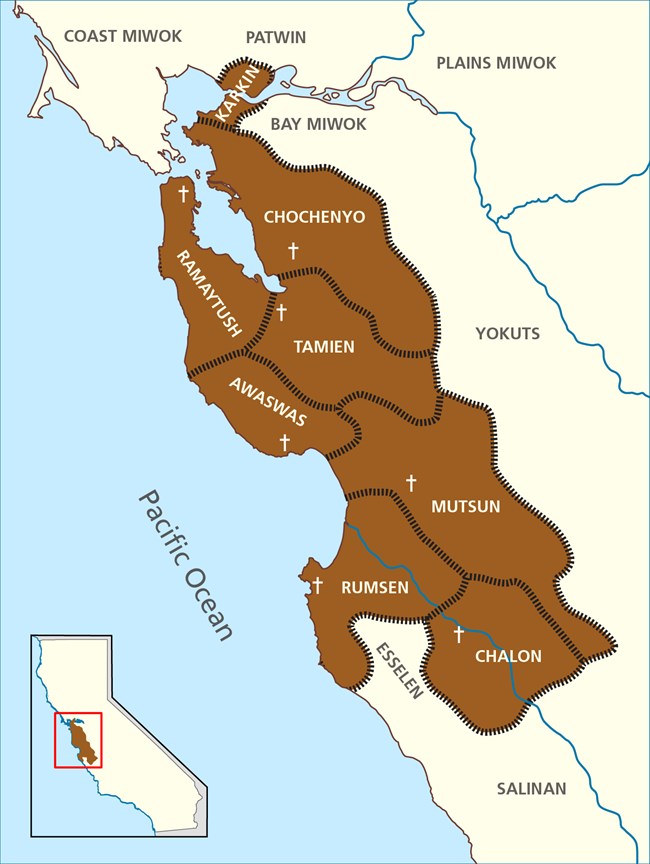Last updated: May 11, 2021
Article
Impact of Spanish Colonization

Written by Jonathan Cordero
Prior to the arrival of the Spanish in 1769, the indigenous peoples of the San Francisco Peninsula, the Ramaytush, numbered about 2,000 persons. They were divided into ten independent tribes along the San Francisco Peninsula.
Mission San Francisco De Assis, now known as Mission Dolores, was founded by Fray Francisco Palou on July 29, 1776. The Aramai tribe of the Ramaytush was almost entirely incorporated into Mission Dolores by 1784. “By 1801 all of the native San Francisco Peninsula people had joined Mission Dolores,”1 and about eighty percent of the population had died. By 1850 only about five Ramaytush families survived.
The near complete destruction of the Ramaytush resulted in large part from disease, and poor living and working conditions at the mission. At Mission Dolores average life expectancy after baptism was only four years. The high rates of death inevitably destroyed tribal communities and tribal culture.
The Mexican Secularization Act of 1833 granted only a few mission Indians land, but the vast majority of natives fled the missions and became an exploited laboring class on Spanish and Mexican ranchos across the State. “While missionization destroyed populations and dismantled families and tribes, secularization dispersed the remaining Indians across the state.”2
“The destruction, dismantling, and dispersion of the missionized California Indians was further exacerbated by the genocide, kidnapping, and legalized servitude of Indians by European Americans. “Still, a few lineages, families, and tribes did survive to the present, but like many other Indians in the State, missionized Indians faced problems associated with extreme poverty—poor health care, substandard education, and unemployment—which continues to this day.” 2
1 Randall Milliken at al., “Ohlone/Costanoan Indians of the San Francisco Peninsula and Their Neighbors, Yesterday and Today,” (Oakland, CA, Archaeological and Historical Consultants, 2009).
2 Jonathan Cordero, “Missionized California Indian Futures,” News from Native California, 28 (2) (2014), 63.
